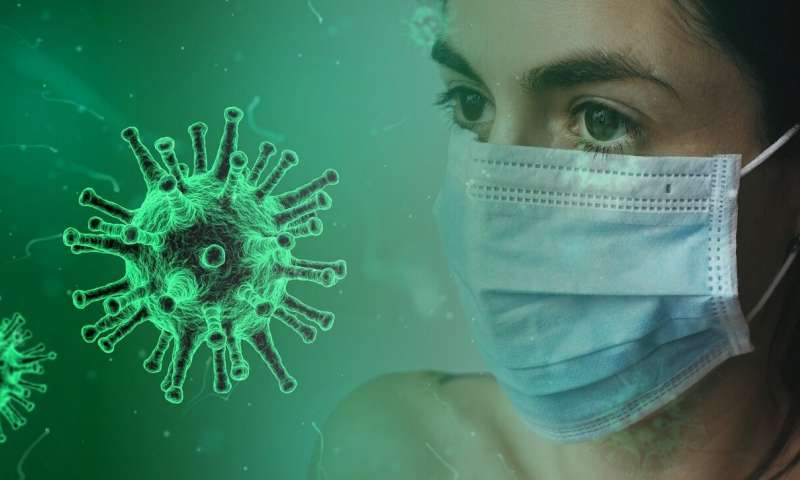An international study involving University of Alberta researchers has revealed two effective ways to sterilize disposable masks, potentially allowing them to be reused by health-care workers during the COVID-19 pandemic in areas with limited resources.
The study, led out of the University of Colorado and involving an international consortium of researchers, offers health authorities clear steps they can use to safely and cost-effectively sterilize personal protective equipment (PPE).
“There are lots of parts of the world that don’t have the resources that we do,” said David Evans, a member of the U of A’s Li Ka Shing Institute of Virology, who was involved in the study. “So if we can come up with a strategy that would help safely reuse those materials, that would be great for everyone.”
The research teams tested two sterilization methods: Heat, and a combination of methylene blue—a compound commonly used in blood banks to kill pathogens—and bright light.
The researchers were split into two groups—a virology group and a mask group. The virology group tested methods of cleaning six types of masks that had been contaminated with the SARS-CoV-2 virus or a surrogate virus. The masks ranged from a common homemade cotton mask to the N95 mask typically used by hospital health-care workers. Scientists in the mask group then tested the sterilized masks to ensure they retained their protective qualities.
According to Evans, both methods of sterilization worked similarly well.
“Heat is a pretty good way of inactivating these viruses,” he said. “We found that after 15 minutes at 65 degrees Celsius in humid air, the virus was all gone. At 75 degrees Celsius, we saw the same effect. However, the method is complicated by the effects of humidity, as less killing is seen in dry air.”
In some cases heat could damage the elastic of the mask straps, so Evans believes there may be a slight advantage to using methylene blue with light.
“What we’ve discovered is that a significant amount of the inactivation takes place without needing to add a lot of light, but it does sort of finish the job for you,” he noted.
An unforeseen advantage seems to be that masks treated with methylene blue are reported to smell “fresh”—a small but important consideration for health-care workers.
Evans stressed that exacting laboratory practices are essential to the effectiveness of the methods. “It’s easy enough to say, ‘Oh, we’ll just treat the mask and carry on.’ Well, how do you know that you haven’t ruined the properties of the mask? This study is intended to give clear guidance for health authorities that could be put into practice with confidence,” he said.
“From the perspective of a health-care provider, being really sure that their protective equipment has been decontaminated is important. Any kind of treatment that gives you some additional sterilization of a mask would be of value to the people who have to wear them all the time.”
The study,”Addressing personal protective equipment (PPE) decontamination: Methylene blue and light inactivates severe acute respiratory coronavirus virus 2 (SARS-CoV-2) on N95 respirators and medical masks with maintenance of integrity and fit,” was published in the journal Infection Control & Hospital Epidemiology.
Ross Neitz, University of Alberta


